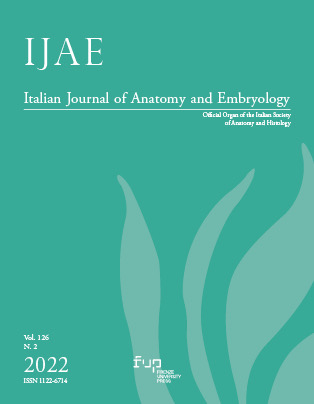A prospective, blinded, randomized-controlled study on regressive bone modeling around dental implants with different machined coronal portion
Published 2022-12-27
Keywords
- marginal bone loss,
- osteointegration,
- implants surface treatment
How to Cite
Abstract
Scientific evidence showed variable degree of marginal bone loss around dental implants both during integration process and during function. Among the different factors that seem to influence this process, a crucial role is up to the crestal module of dental implant. In order to reduce marginal bone loss, different configurations of crestal module have been proposed. The aim of this study was to evaluate the efficacy of half treatment dental implants with a coronal smooth portion of 3.5 mm compared to rough surfaced implants with a smooth coronal portion of 0.5mm, to reduce peri-implant marginal bone resorption. The degree of marginal bone loss was assessed through radiological measures. In addition, soft tissues healing was evaluated through plaque index and gingival index. The results demonstrated a significantly (p= 0.03) lower value of MBL (mean 0.7mm), than HT implants (mean 1.03mm) after 1year functional loading. In conclusion, use of FT implants could be determine better results in order to reduce MBL.


